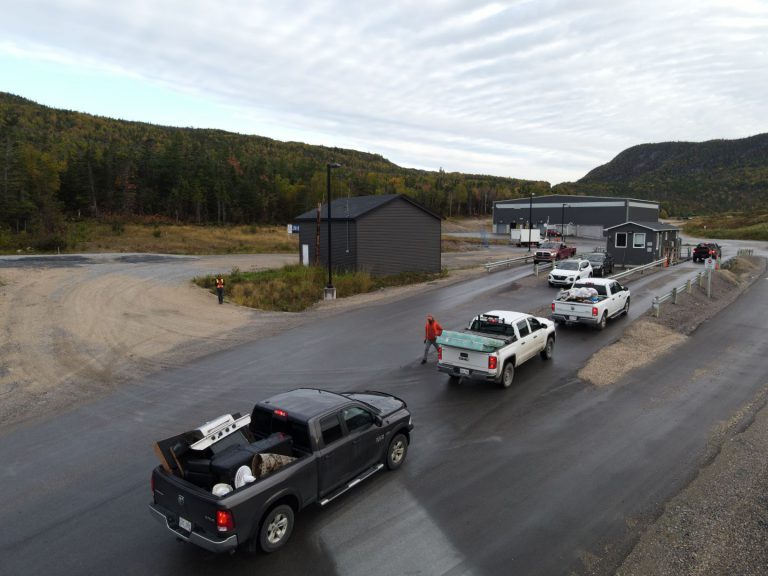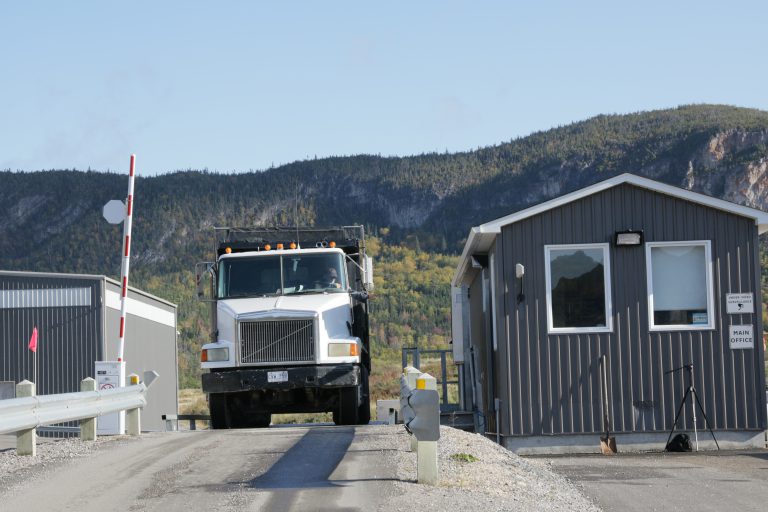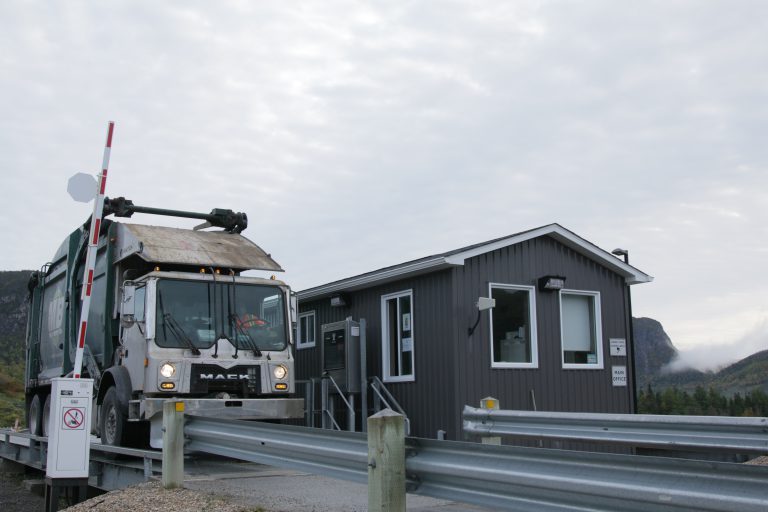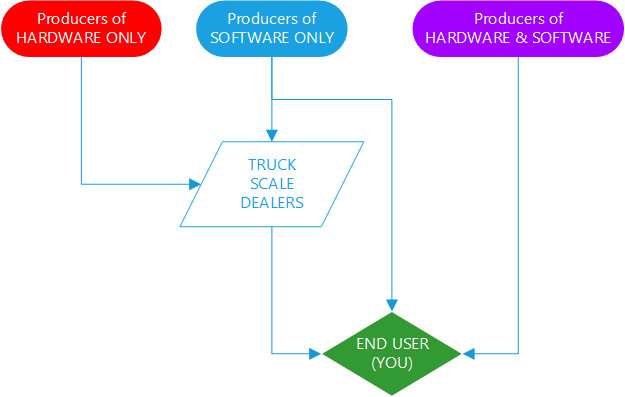
Municipal Free Waste: Free Days or Annual Credit?
Municipal or regional free waste allowances are a common way for waste authorities to offer a break to residents who need to dispose of their waste on an occasional basis. However, the way this is done varies widely from one region to another.
The two most common methods for providing this allowance are (1) free waste days or (2) a predetermined credit per resident. Is one method better than the other? We think it is.
While free waste days are a simple way to offer an allowance, there are several disadvantages
Bottlenecked traffic: If only a single day is available for residents to drop off their refuse for free, that day is, of course, going to be far busier than the others. This means long lineups and a spike in traffic your facility doesn’t necessarily have to deal with on a regular basis.
Inconvenience for Residents: If free waste days are only offered on seldom occasions, residents may find themselves hoarding refuse in anticipation. This isn’t preferable and may lead to dissatisfaction among community stakeholders.
Irregular Staffing Requirements: As mentioned above, free waste days can lead to bottlenecked traffic. This also implies staffing requirements are likely to increase for that day, requiring more hours to be worked simultaneously. Moreover, while the facility is taking in little to no funds on the waste day, it is likely spending more than usual for labour, further offsetting income margins.
Inaccurate Metrics: Since the free waste day is so much busier than other days, focus tends to be placed on throughput rather than accurate metric tracking for solid waste volumes. This leaves valuable data on the table that could have been used to make better management decisions for the organization and the community it serves.
Conversely, predetermined residential credit has several benefits
Smoothed Traffic: Offering credit means residents can use it whenever they want without the need to show up at a certain time of day.
Community Relations: residential customers are free to bring their refuse when it is convenient for them, benefiting your organization’s relationship with the community.
No Extra Stress on Your Workforce: by regulating traffic, you are also regulating the staffing levels necessary to accommodate the extra loads.
More Accurate Metrics: Since traffic is smoothed using the credit method, staff can focus on accurately tracking solid waste volumes as they normally would. This can aid in making critical management decisions such as determining whether the credit for each resident should be increased or decreased.
The Bottom Line
There is almost no reason to have free waste days rather than credit for residents unless your scale and transfer station management software isn’t up to the task. Strong Data Automation can help your organization track all of the data and help your organization run smoother.

Choosing the Best Truck Scale Software Provider
Where truck scale hardware is largely similar, relying on reputation and support as differentiators, truck scale software tends to be widely different in their approach to handling load processing.
Below are some points to consider when comparing truck scale software companies:
Price, Licensing, and Support Structure
Software pricing can be broken down into several different structures. Where commercial software traditionally has a large upfront fee for product licensing, modern software is often licensed on a monthly or yearly basis. This can sometimes take the form of Software as a Service (SaaS) for entirely web based software or simply as a regular subscription price structure while it’s stored on your organization’s own servers and devices.
In addition, support will cost extra. It is unadvisable to purchase software without support since the software will serve as the backbone for your organization’s work flow. Some companies will even combine the monthly licensing with service and support for a single monthly or yearly fee. This can simplify billing and makes sense if licensing and support will never be purchased separately. Either way, it is important to take the software service into account when evaluating the pricing structure of competing software companies.
Support Quality
Not all support is created equally. Ask the competing firms detailed questions about the support they plan to provide. More specifically:
– What is the method for contact (email, chat, phone, etc)?
– Is the support outsourced to a third party?
– Are the people on the other end of the phone or email experts in the software or are they just reading from a script?
– What hours will support be available and on which days of the week?
– Are there different levels of support available?
– What is the average response time for submitted support tickets?
Whether this support is offered locally or remotely or locally is not especially relevant. Unlike hardware, software support can be provided effectively from a distance using screen sharing programs like GoToAssist or BeyondTrust.
Company Reputation and Reliance
Just because a software company is well known, doesn’t necessarily mean they produce great software. In fact, you may find yourself lost in their sea of clientele after the sale is closed. Instead, ask for references that are relevant to your application and can attest to the quality of their product and ongoing support. It is beneficial to request at least three references from three separate organizations. Be sure to follow up on these references as well. You may be surprised by their honesty.
User Interface (UI) and Teachability
The way a piece of software arranges its menus and screens is largely reflective of the company’s approach to scale management. This is one of the factors that can vary the most among software options and it can have a tremendous impact on your organization. If the software menus are complicated and unintuitive for employees, it can negatively affect the rollout of the software implementation. Even after the initial implementation, training new hires to use the software can be cumbersome and restrict the range of employees that can be hired for those roles.Conversely, software that is laid out simply and intuitively can have a very positive impact.
Current Infrastructure Integration
Scale software, to be truly effective, should integrate with your current infrastructure, most notably your accounting/ERP software such as Quickbooks or Sage. Ensure this is possible with the prospective scale software. Most are compatible but the degree and method of integration may vary depending on the capabilities of both the new scale software and the accounting software application programming interface. If possible, integration should be fully automated without the need to manually exchange files between the platforms on a regular basis. Both pieces of software need to be willing to “play nice” in order for this to be accomplished so check with your current software provider as well.
Other examples of software integration include compatibility with hardware such as traffic lights or gates. Again, this is not typically an issue but check before choosing a preferred proponent.
Value Added Features
Choosing a new scale management platform is a great time to declutter your organization’s work flow. One way to do this is by asking proponents what value added features they have to offer. It’s a good idea to leave this request open ended since you may not be aware of what these features could be. For example, platforms now offer an online portal that allows customers to view and pay invoices as well as view their corresponding scale photos. This greatly reduces the burden on your AR department by automatically addressing outstanding invoices as well as reducing the number of payment disputes.
For information about how a truck scale RFP or tender should be issued, CLICK HERE.
For information about choosing the best truck scale hardware, CLICK HERE.

Choosing the Best Truck Scale Hardware Provider
There are a few things to take into consideration when choosing a truck scale hardware vendor, similar to choosing a heavy equipment vendor of any other type.
Below are some points to consider when comparing truck scale hardware companies:
Pricing
The initial cost of the software is an obvious consideration but look beyond that to Total Cost of Ownership (TCO). In calculating the TCO, consider the following:
1. Lifespan of the scale: How many vehicles will it weigh before it needs to be replaced?
2. Included warranties: What is covered and what isn’t? Does this cover likely occurrences or only remote possibilities?
3. Cost and availability of replacement parts: What are the most common parts you will need in the future? Are they costly? Will you need to keep some of these parts in inventory for emergency use?
4. Cost of any specialized labor performed by outside personnel: Is the equipment especially complicated? If so, much of the maintenance labour may have to be performed by a specialist which is typically more expensive than internal labour.
Local Product Support
While software can be managed and supported remotely, hardware may need to be supported locally. This may be done using a first or third party representative through maintenance contracts. It is a good indicator if these local shops have existed for a long time as it probably means they will be around for the lifetime of the Truck Scale. Also, your local dealer will know how your climate can affect the components and which configuration will work best for you.
Company Reputation and Reliability
While software can be managed and supported remotely, hardware may need to be supported locally. This may be done using a first or third party representative through maintenance contracts. It is a good indicator if these local shops have existed for a long time as it probably means they will be around for the lifetime of the Truck Scale. Also, your local dealer will know how your climate can affect the components and which configuration will work best for you.
For information about how a truck scale RFP or tender should be issued, CLICK HERE.
For information about choosing the best truck scale software, CLICK HERE.

Should Scales and Software be Combined When Issuing a Request for Proposal (RFP)?
When a site is renovated, or set up for the first time, two important items are typically issued for Request for Proposal (RFP) or tender: (1) Truck scale equipment and (2) truck scale software. So, should these two items be paired together in a single RFP or should they be split into two separate requests?
In short, the scale equipment and scale software should be issued using two separate RFPs. Of course, this means doubling the workload of the procurement department or other personnel responsible for the evaluation so there must be good reason for doing this. Before diving into the justification for the extra work, we must first understand how truck scale hardware and software is typically sold.
How Truck SCale Hardware and Software is SOld
There tend to be four relevant parties, besides your organization, you should know about before issuing a RFP: producers of hardware only, producers of software only, producers of hardware and software, and truck scale dealers.
Producers of truck scale hardware only tend to focus on their core competencies without branching out into other sectors. Although the hardware and software are used in the same applications, the competencies required to produce each of them are entirely different and mastering both, if even possible, requires significant resources. These firms tend to sell through dealers only.
Likewise, producers of truck scale software only also tend to focus on their core competencies, mastering the nuances of the programming logic required to accomodate customers’ demands such as complicated pricing schedules and customer accounts. Software developers may sell directly to a customer or through a dealer. With regards to automated kiosks, some are produced by software producers and some are produced by hardware producers. Neither arrangement is necessarily better as this hardware is not closely related to the fundamentals of truck scale hardware.
Producers of truck scale hardware and software tend to be very large companies and tend to deal to customers directly. Usually, their products will be strongest in the area that the company originally produced. For example, a scale company will produce better scales than they will software, while a software company will produce better software than hardware. These firms tend to sell directly to customers using their own sales representatives.
Finally, there are truck scale dealers. These firms may produce some of the customer hardware such as the weighbridge but most components will be sourced from the hardware producing firms. Quite often, dealers will bid on a RFP/tender using a combination of one of their wholesalers and an exclusive software partner to provide a turnkey package
The relationship between these organizations is visualized below. Of course, this is only a depiction of market tendencies; there are exceptions to every rule.

DON’T LET THE HARDWARE-SOFTWARE COMBINATION BE DETERMINED FOR YOU.
As mentioned above, turnkey packages that come as a result of combined RFPs or tenders will come from dealers or producers of hardware and software. In either case, each proponent will only be able to offer the combination of hardware and software that is available to them and not necessarily the best combination for you and your organization. After all, good hardware isn’t indicative of good software and visa versa. The skill sets required to produce each are very different.
It is natural to believe that matching the brands of your hardware and software would result in a more bug free system but this isn’t necessarily the case. Truck scale software programs always rely on the weight indicator for it’s stream of data and the methods for integrating with these indicators are generally similar. Any brand of truck scale software tends to be compatible with any brand of truck scale weight indicator. While compatibility should be used as a fundamental requirement for truck scale software, compatibility is not a key differentiator for choosing truck scale software.
While issuing a single RFP or tender for the truck scale hardware and software may be convenient, it will likely lead to some degree of compromise that won’t just affect those using the scale, but the entire organization including finance, operation and other management personnel. It makes the most sense to choose the absolute best hardware provider and absolute best software platform that benefits the entire organization. For example, while a vendor may produce great, long-lasting hardware, their software may not alleviate the burden of administrative tasks like invoicing or dispute resolution. Furthermore, the truck scale will likely last far longer than the software, or at the least the duration of the software service agreement which is typically 5 years.
In short, splitting up your RFPs or tenders into hardware and software requests will help prepare your organization for long term success.
For more information about choosing the best truck scale hardware, CLICK HERE.
For more information about choosing the best truck scale software, CLICK HERE.